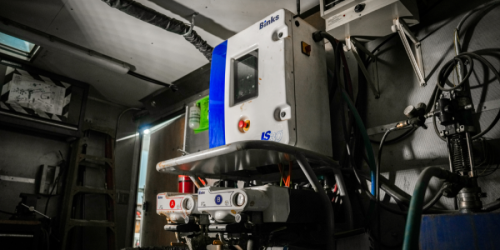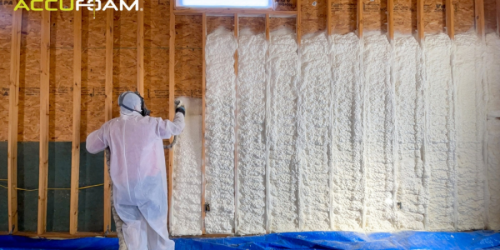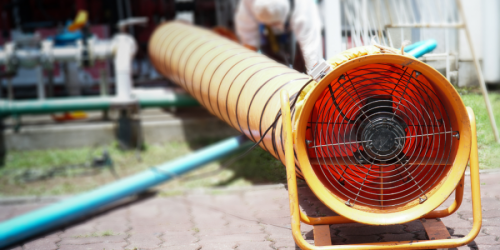Q&A Forums
closed cell long term Post New Topic | Post Reply
| Author | Comments |
|---|---|
|
steven argus
Posted: Dec 06, 2010 12:47 PM
|
closed cell long term
Had a customer ask me today if the "inert gas," that is trapped in the cells of closed cell foam, will dissapate over time. I came up with an answer that I pulled from my back side. But the truth is, I don't know. Some other gases dissapate through the foam (oxygen, vapor, etc.) Does the closed cell foam loose this gas over time and also loose R value?
|
|
Bryan Kwater
Posted: Dec 06, 2010 08:31 PM
|
Isn't that what aged R-value is? Measured @ 6 months time. Supposedly it's not supposed to drop past that point. |
|
mason
Posted: Dec 06, 2010 09:09 PM
|
The R value reduction in closed cell foam such as polyurethane, polyiso and XPS comes from outside air ingressing into the cells, and not the blowing agent being released. According to research conducted by Bomberg, Kumaran, Alumbaugh and others, it has been demonstrated that about half of the blowing agents used in sprayfoam gets absorbed into the cell wall matrix of the foam. This leaves a little space that outside air could infiltrate into. However, depending on the type of substrate and coating (if any) on the foam, this infiltration of outside air can be greatly reduced or even eliminated. For example Alumbaugh tested the R value of 3 lb density sprayfoam over a 10 year plus period installed to the exterior of concrete, wood and metal substrates covered by a variety of coatings including, acrylic, silicone and polyurethanes. Over wood with acrylic coating, the foam after 10 years tested out around 5.8 R value. The foam installed over metal with a low perm rated urethane coating tested out at over 7 per inch. If left uncoated a typical closed cell sprayfoam will have its R value reduced about 10% in 6 months time at 1-2 inch thickness. This would represent close to 90 % of the total R value reduction of the foam. The thicker the foam the less R value reduction over time because the outside cannot get to the interior of the foam very quickly. That is why the sprayfoam industry requires a 6 month aging of test samples before conducting R value testing. Hope that helps, |
|
quentin
Posted: Dec 06, 2010 09:17 PM
|
Some will slowly leak out on the outer areas of closed cell so you have the aged values. Since the 245FA is less dense than normal air it is actually a better insulator but also this means that the thicker the foam is, the more cumulative effect you have creating a higher overall value when it is aged. Since you are only losing it in the cells to the outside of the foam and the center is not. So the outer inch will have an aged value but if you do 4 inches then the innner ones will keep the initial value and not "age" so have the higher R value and retain it. |
|
mason
Posted: Dec 07, 2010 02:13 PM
|
Sorry to disagree but the R value reduction comes from outside air infiltrating into the cell structure and not the blowing agent leaving the foam. Very little blowing agent leaves the foam over 20 -40 year time frame, and not enough to significantly affect the R value. I would be happy to send you the data and research conducted by Bomberg, Kumaran and others. Mason |
|
steven argus
Posted: Dec 08, 2010 02:26 PM
|
Thanks Mason but do you think you can dumb this down for me. Vapor can pass through in certain situations (cold storage, indoor pools) oxygen will pass too. Are the molecules in the 245 larger than other gases? |
|
SprayFoamSupply.com
Posted: Dec 08, 2010 08:47 PM
|
Closed cell foam is not 100% closed cell, you have about 92% closed cell for 2lb. You have about 8% of the volume of the foam that consists of areas between the closed cells. During the reaction that makes the foam, heat is generated. The thicker the pass, the more heat. When you have something that is hot and it cools, it wants to shrink as it cools. This cooling creates a negative pressure in the closed cells and in the area between the closed cells which is called the polymer matrix. Over time, air migrates into the polymer matrix because it is "sucked in" if you will. This air is only drawn into the polymer matrix and not into the closed cells, as they are closed. This is the way that I understand it. Hope this helps. Sorry to jump in on ya Mason, please correct me if I am off. George Spanos Spray Foam Dist of NE Inc |
|
mason
Posted: Dec 09, 2010 08:17 AM
|
The best description of how blowing agents in sprayfoam perform over time I have seen is by Mark Bomber in his book Spray Polyuethane Foam In External Envelopes of Buildings in the chapter titled; Factors Affecting the Performance of Foam. He follows the blowing agent studies of Tsederberg in 1965, Bomberg/Kumaran in 1989 and 1995, Bauman in 1982, Brandeth and Ingersol in 1980-81, Ostrogorsky and Glicksman in 1986, joint research by the National Research council of Canada in the late 80s to early 90s. The research was conducted on CFC and HCFC blown foam. However, HFC blown foams would have similar characteristic in regards to blowing agent diffusion as the CFC and HCFC blown foams. Following Bomberg's analysis of the research. 1. The inititial weight of the blowing agent of a typical 2 lb density foam is approximately 11% 2. Over 21 year period the amount of blowing agent in the outer layers of the foam were 87% and 86%. "When correcting for loss that occurs during production, one may conclude that very little of the BA (blowing agent) actually escapes from the sample. 3. During spraying an exothermic reaction takes place which increases the temperature of the foam. Blowing agent gas pressure increases to 1 to 1.05 atmosphere. When the foam cools the gas pressure is reduced to 0.75 atmosphere. 4. "Subsequently some of the blowing agent enters and saturates the foam cell matrix." Measurements conducted by Kumaran indicated that cell gas pressure decreased to 0.55 atmosphere within a few weeks and 0.43 within 7-9 months. "Because these measurements were made on fully encapsulated specimens, the reduction of blowing agent pressure cannot be ascribed to the outward diffusion of, but implies significant solubility of blowing agent into the polymer matrx." 5. So according to Bomberg, "there are 2 stages of the aging process. ... The first stage shows a rapid reduction in the thermal resisivity (R value)of the foam ... that are caused by carbon dioxide leaving the cells and air components entering the cells. The second stage is characterized by slow changes in the cell gas composition when the air ingress is completed and the outward diffusion of the BA changes the cell gas composition at a much slower rate. 6. Bomberg concludes that over a 15-25 year period, the R value of the foam after 2-3 years of aging would not vary more than 2% with foam that has a thickness of between 1.5 to 6 inches The greater reduction of R value, (more than 90%) would be caused by the ingress of outside air into the cell walls and not the outward diffusion of blowing agent gas. I know this was not the simple explanation. I tried to provide the simple answer first, but it seemed to cause more confusion. George thanks for your analysis. By lowering the gas pressure within the foam, less blowing agent not more would escape by outward diffusion. The existence of high density skins within the foam and a low perm rated substrate and/or coating can eliminate or greatly reduce the exfiltration of the blowing agent. |
|
Ivan Pauliuchenka
Posted: Dec 09, 2010 01:18 PM
|
Is that means that going with 1/2" layers or so would be the best way of installing as you creating few layers of skin on top of each other. greater performance overtime, right? |
|
mason
Posted: Dec 11, 2010 09:17 PM
|
Yep, the high density skins slow down the ingress of outside air somewhat. I don't have specific data on it though. |





























